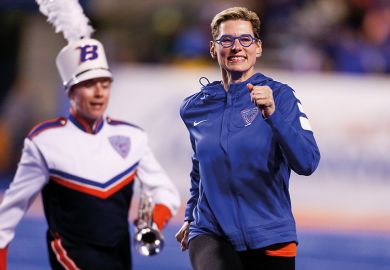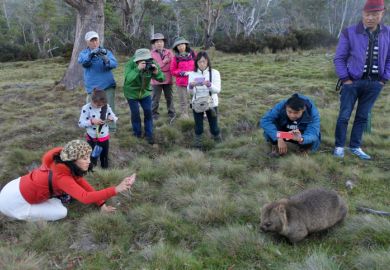Boise State University is willing to reassess its mandatory diversity course after the initiative came under intense criticism, but it remains determined to push ahead with the overall goals, its president has declared.
From inside one of the most politically conservative states in the US, Boise State for the past decade has run one of the most forthright sets of mandatory classes in higher education, aiming to teach students the social realities beyond their overwhelmingly white communities.
That balancing act, already tense, imploded this semester with an allegation of anti-white racial bias in one of the classrooms. Although the claim was eventually proven unfounded, Boise State was forced to suspend the course for a week.
Boise State’s president, Marlene Tromp, admitted in an interview to having been surprised by the “antagonism and venom” she sees these days in Idaho, tied in large part to Covid-related frustrations and to Donald Trump’s refusal to accept the 2020 election results.
“We’re very much on the vanguard of what’s happening, and universities nationally are very much the target of the animus,” Dr Tromp told Times Higher Education. “It’s an incredibly painful place to be.”
The suspended class is from one among three full-semester courses known as University Foundations that aim to provide all Boise State graduates with basic knowledge in sciences and the humanities, as well as to teach oral communication, critical enquiry, ethics and diversity.
Dr Tromp arrived at Boise State in 2019, several years after the structure was created, and immediately noticed an accumulation of criticism – partly down to the “unusualness” of the courses lacking any departmental home or normal chain of authority within the university, but much of it “sort of amorphous” and coming from parents and former students unhappy about the courses.
Dr Tromp has been willing to identify the person whose complaint led to the shutdown only as “a person that the university really trusted” who claimed to have seen a video showing a white student made to feel guilty for his skin colour during a class discussion of structural inequality.
An outside investigation found no basis for the allegation. But given the climate, Dr Tromp said, the week-long pause in the class was a reasonable step at the time.
Even before that complaint, she said of the course, “we were already talking with the faculty, trying to find out what’s going on here, why am I down at the legislature hearing about this every single day?”
While she expects a review of the course structure to be a key initial task for Boise State’s incoming provost, John Buckwalter, Dr Tromp describes herself as committed to the overall goal.
In part, her confidence stems from the support of Idaho’s business community, where her allies include Kurt Liebich, a former chief executive of the forest products company RedBuilt who now serves as president of the Idaho State Board of Education.
Mr Liebich, in an interview, said he serves on the boards of at least four companies and sees unanimous demand among them for teaching their future employees about issues of diversity and inclusion.
“It’s just something that every business needs to be focused on,” he said. “To me, these courses are pretty critical in developing the type of students that employers want to hire.”
He added: “I can’t speak, obviously, for the entire Idaho business community. But I can tell you there are many business leaders who are very concerned about the narrative and are asking themselves what do we need to do here to provide support to our higher ed institutions.”
Register to continue
Why register?
- Registration is free and only takes a moment
- Once registered, you can read 3 articles a month
- Sign up for our newsletter
Subscribe
Or subscribe for unlimited access to:
- Unlimited access to news, views, insights & reviews
- Digital editions
- Digital access to THE’s university and college rankings analysis
Already registered or a current subscriber? Login








